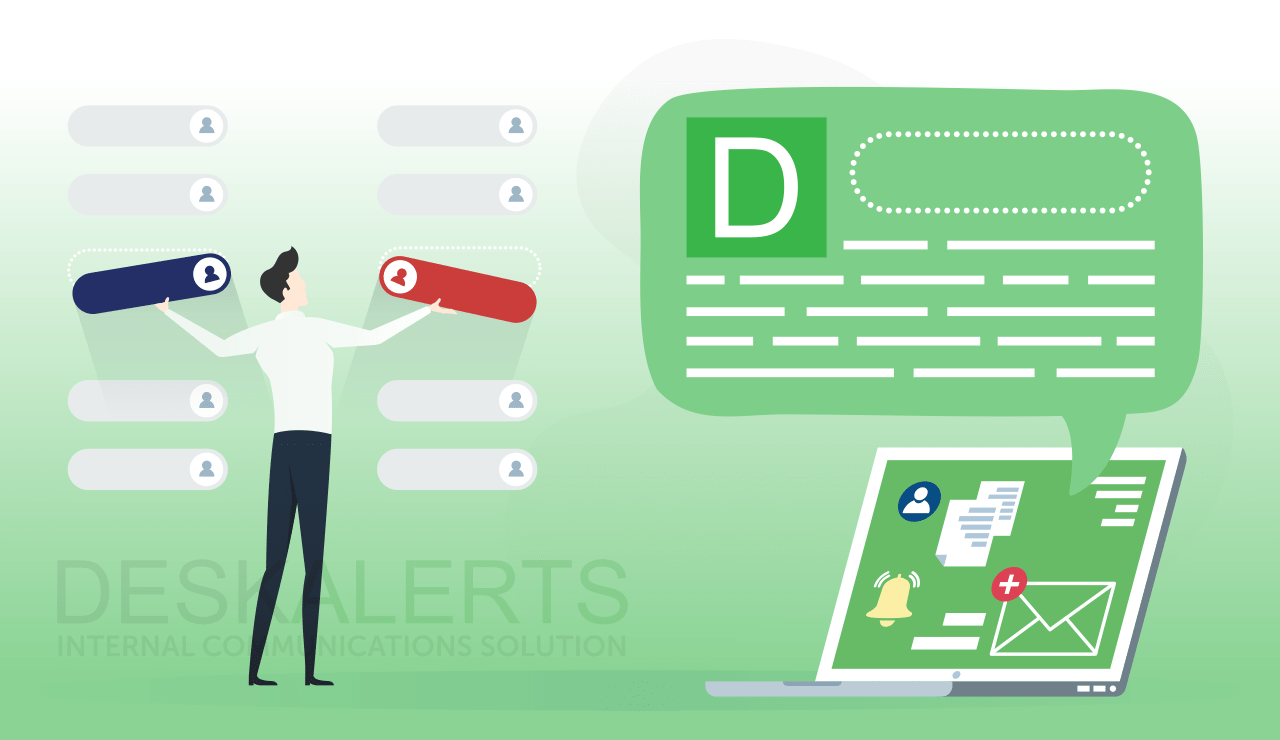6 min read
Bank Training Programs For Employees
In today's rapidly evolving financial landscape, banks must stay ahead of industry changes, regulatory updates, and technological advancements....
4 min read
Caroline Duncan : Nov 13, 2020 2:15:00 PM

One of the oldest maxims in communication is to know your audience: who is it you are trying to reach? For internal communicators, on the surface that can seem quite simple… they’re trying to reach employees within their organization.Unlike external communicators, those communicating internally may not necessarily have to make assumptions about their target audience and fly blind without detailed research and demographic data to back this up.
But even internal communicators need to thoroughly understand their audience in order for their communications to be successful. By doing this, communications will be received and understood more favorably by your employees. In short: you need targeted internal communication messages to ensure the right people get the right information.
Download 15 free internal message samples
Within an organization – particularly large ones – there will be many different audiences. It’s a mistake to think of your employees constantly as a homogeneous mass…they will have different preferences and interests.
From an internal communications perspective, one of your audiences will be the entire organization. There’s no getting away from this. There are some types of information that you need to share with every single employee.
But some items that are being communicated don’t need to be shared with everyone. In fact, sending all internal communications material to the entire organization can be a mistake. Employees who receive too much irrelevant information will soon tune out to everything that you send, falling victim to information overload and fatigue.
Regardless of who you are communicating with, the information should always be timely and relevant. The person reading it should be able to easily understand what you are saying and why you are saying it and, most importantly, why you are sending the information to them in particular. The “what’s in it for me?” factor.
This is where audience segmentation in internal communications is invaluable. Targeting internal communications messages ensures you adapt the content to ensure it is relevant to the people you are trying to communicate with.
The audiences within your organization will be determined by your workforce demographics. Where do you operate? In one country or multiple ones? Do you need to consider cultural differences? Language barriers? Do you have a professional workforce or a blue collar one or a mixture of both? Are you in a highly specialized industry with a lot of technical jargon?
Different audience types include:
You may need to communicate to them about things like policies, procedures and processes necessary to do their jobs, regulatory changes, training opportunities and so on.
With this audience type you can use more technical language, as appropriate, than you would if you were communicating with a general audience.
Individuals in work teams may have different roles, backgrounds, specializations, education levels and so on. For example you may have an accountant who is part of a project team with engineers and administration staff in support roles. This needs to be taken into account when crafting your communications.
Once again, these audience types will comprise of a diverse range of people, with the geographic location of where they work being the common factor that they have.
Using audience segmentation in your internal communications can stop a lot of irrelevant information being sent out, but can also help to boost your internal communications by encouraging sharing among your different cohorts of staff.
In some instances, this can help you when you know you need to have material translated into other languages. Knowing where people are located can also help you know when to send information if your organization is spread across different time zones.

Once you establish the different audience types in your organization for your targeted internal communications, you can easily create audience groups using Active Directory for the purpose of email communications.
These groups should be maintained regularly and adding people to groups should be part of your company’s onboarding process: unfortunately sometimes this falls through the cracks and new starters get left off of distribution lists for critical information.
Understanding your audiences can help you to determine how, and how often, you will communicate with them, and the tools and channels that you will use to do so.
DeskAlerts is a software system that will integrate with your Active Directory system and enable you to communicate easily through audience segmentation in your internal communications targeting.
With DeskAlerts you can send targeted internal communication messages to your employees using any of its tools. For example if you are a multinational company with offices in many cities around the world and your Chicago office building will shortly have fire alarm testing and you don’t want people in that location to panic, you can send pop-up notifications to all employees based in that building letting them know what’s going on. Or perhaps you have sales and marketing people based around the world in different cities. You can send them the results of campaigns they’re working on, in real time, to their desktops via a scrolling tickertape.
Target audiences, in particular using Active Directory, should feature in any internal communications campaign so that you reach the right people, in the right place, at the right time with any important messaging.

Personalizing your messages is an even more powerful way to communicate. Your employees are used to personalized communications in other facets of their lives: from their curated-by-algorithm social media feeds, to AI understanding their preferences on e-commerce sites - personalization helps to make an individual feel important, understood and connected to the “big picture”.
While internal communications doesn’t traditionally lend itself to offering a personalized approach through traditional communications channels, this is a thing of the past thanks to DeskAlerts.
When you use DeskAlerts for audience segmentation you have the ability to further personalize your messages. By using the “placeholders” feature inbuilt into DeskAlerts you can insert variables into your messages that, when you send them, will be replaced with a value such as a username, name or email that is preloaded from a specially loaded file.
Examples of using this feature in DeskAlerts include:
By tailoring your communications in this way you create a bespoke, and more authentic, experience for your employees so they feel more connected, and not just a recipient of a mass notice that everyone else receives.

6 min read
In today's rapidly evolving financial landscape, banks must stay ahead of industry changes, regulatory updates, and technological advancements....

7 min read
Employee safety programs are not just a regulatory requirement; they are a strategic imperative for modern businesses. By prioritizing safety,...